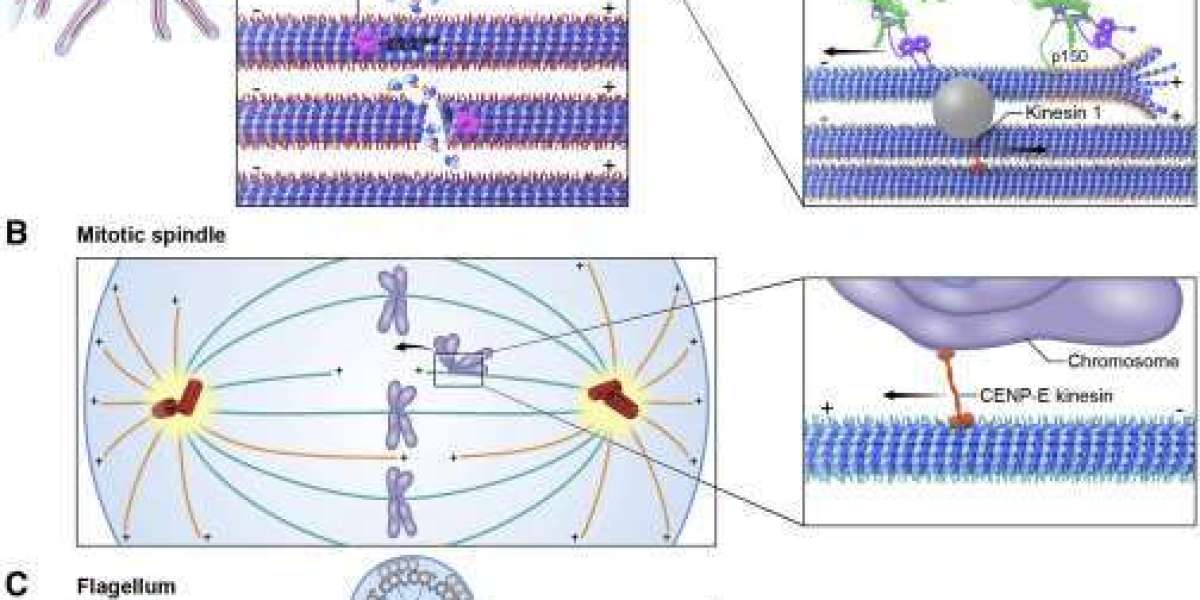When we look at the awe-inspiring architecture of life at the cellular level, one of the most intriguing and essential features is the cytoskeleton. This dynamic network of protein filaments provides structure, facilitates movement, and enables intracellular transport. Advances in technology have revolutionized our understanding of the cytoskeleton and have expanded the possibilities of bioengineering, diagnostics, and therapeutics. This article explores the cutting-edge technologies related to the cytoskeleton and their exciting applications.
Understanding the Cytoskeleton
The cytoskeleton consists of three main types of filaments:
Microfilaments (Actin Filaments): Involved in muscle contraction, cell movement, and cytokinesis.
Intermediate Filaments: Provide structural support and stability, connecting cells through desmosomes and hemidesmosomes.
Microtubules: Assist in chromosomal segregation during cell division, and serve as tracks for intracellular transport.
Cytoskeleton Technologies
·High-Resolution Microscopy
The development of advanced microscopy techniques, such as super-resolution microscopy (e.g., STORM, PALM), has drastically improved our ability to visualize the cytoskeleton. These technologies enable researchers to observe the dynamic processes of cytoskeletal rearrangement in living cells with unprecedented detail.
Applications:
Research: Mapping the architecture and alterations in the cytoskeleton in various diseases.
Drug Discovery: Observing how pharmaceuticals affect cytoskeletal integrity.
·CRISPR-Cas9 Gene Editing
CRISPR-Cas9 technology has paved the way for targeted modifications in genes encoding cytoskeletal proteins. This technique allows for precise manipulation of the cytoskeleton, providing insights into its role in cellular functions and disease mechanisms.
Applications:
Functional Studies: Creating knockout models to study the roles of specific cytoskeletal components.
Therapeutics: Developing gene therapies for diseases caused by cytoskeletal malfunctions (e.g., certain muscular dystrophies).
·Intracellular Sensors and Biosensors
Developing intracellular sensors and biosensors has enabled real-time monitoring of the cytoskeletal dynamics. These sensors can detect changes in protein interactions, mechanical forces, or cellular states.
Applications:
Cell Biology: Understanding mechanical signal transduction and cytoskeletal responses to environmental changes.
Medical Diagnostics: Early detection of diseases like cancer, where cytoskeletal alterations are a hallmark.
·Optogenetics
Optogenetics allows precise control of cellular functions through light-sensitive proteins. By integrating optogenetic modules with cytoskeletal proteins, researchers can manipulate cytoskeletal dynamics with high temporal and spatial resolution.
Applications:
Neuroscience: Studying synaptic plasticity and neuronal circuit functions.
Tissue Engineering: Controlling cell morphology and organization in engineered tissues.
·Organoids and 3D Cell Cultures
3D cell cultures and organoids provide more physiologically relevant models for studying the cytoskeleton. These models closely mimic the in vivo environment, allowing for a better understanding of cytoskeletal organization and function.
Applications:
Disease Modeling: Investigating the impact of genetic mutations on cytoskeletal behavior in specific tissues.
Drug Testing: Evaluating the effects of drugs on cytoskeletal integrity in a more relevant biological context.
Future Perspectives
The integration of these technologies offers exciting prospects for the future. High-throughput screening using cytoskeleton live cell imaging and gene editing could streamline the identification of new therapeutic targets. Combining optogenetics with biosensors might enable precise modulation and monitoring of cytoskeletal dynamics in real time, revolutionizing regenerative medicine and personalized therapies.
As our understanding of the cytoskeleton deepens, continued technological innovations will unlock new horizons in diagnostics, drug development, and therapeutic interventions. The marriage of cytoskeletal research and cutting-edge technology holds promise for addressing some of the most challenging biomedical questions and improving human health.
Conclusion
Technologies related to the cytoskeleton have opened up new avenues for scientific discovery and medical advancements. From high-resolution microscopy to gene editing and optogenetics, these tools illuminate the intricate architecture and dynamic behavior of the cytoskeleton. The cytoskeleton, formerly seen as simply a structural component, is now recognized as a key player in countless cellular functions and pathologies, thanks to these technological advances. In addition to research conducted by professional institutions, cytoskeleton CRO services provided by some biotech companies have also accelerated the development of cytoskeleton technology. With further research, the insights gained will not only enhance our understanding of cellular processes but also lead to groundbreaking applications in medicine and biotechnology.








